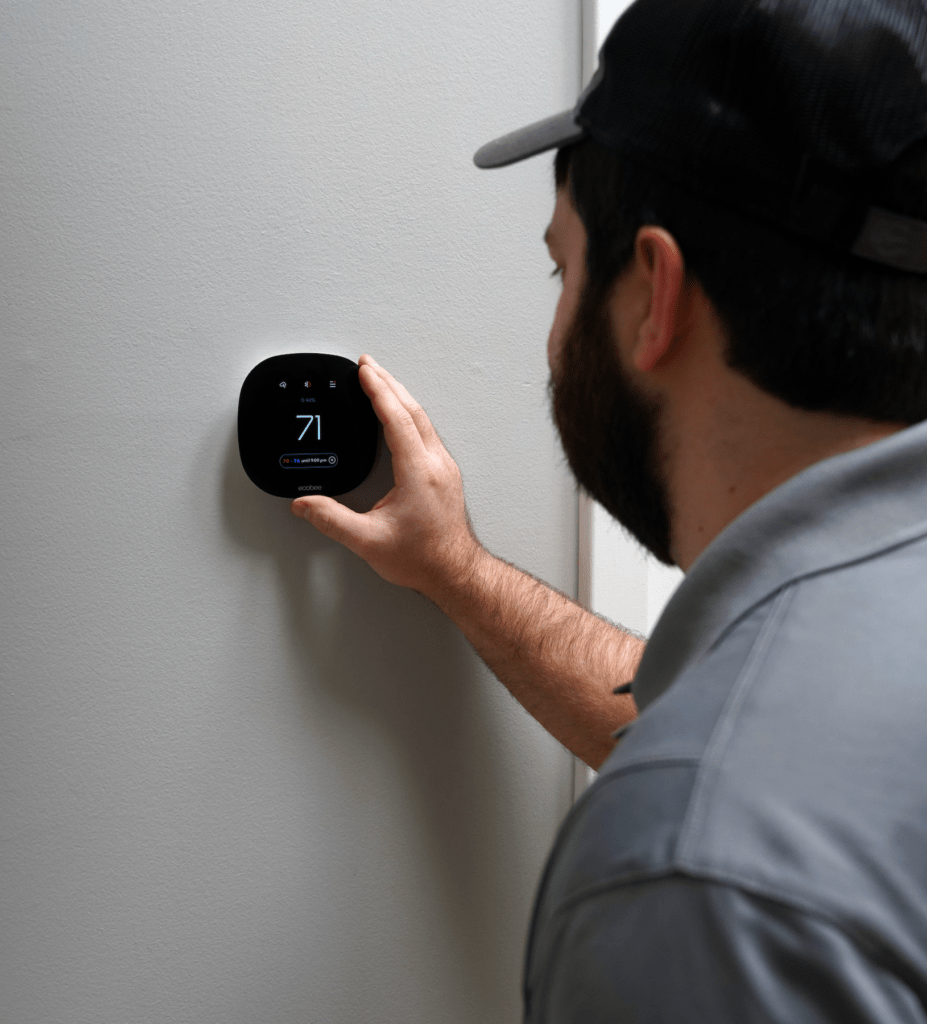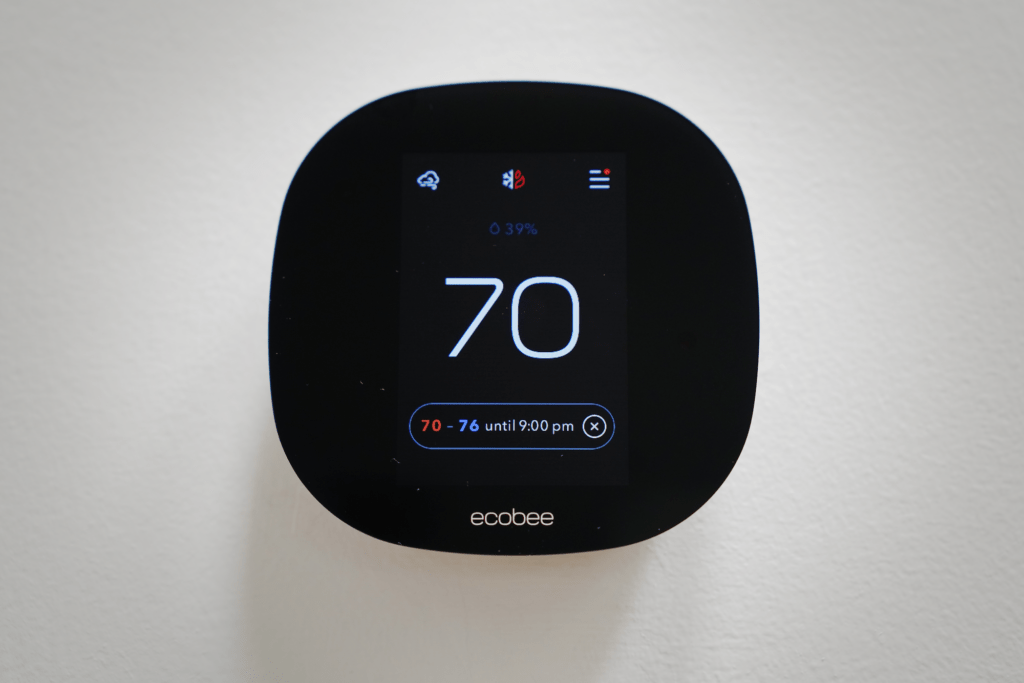What Are System Controls?
Have you ever tried to adjust the temperature in your home, with no effect? It’s easy to assume the issue is with the furnace or air conditioner, but sometimes it’s actually the devices that control the equipment.
HVAC system controls play a crucial role in regulating indoor climate, ensuring comfort, efficiency, and energy savings. Here are some common types:
- Thermostats: These are the controls that allow users to set desired temperatures. Types include digital, programmable, and smart thermostats that can adjust settings based on time or occupancy. Newer thermostats have WIFI capabilities, making them extra convenient, so you can check your home’s temperature remotely, often from an app on a smartphone.
- Zoning Controls: These divide a building into different areas, each with its own temperature control. This allows for tailored heating and cooling depending on the use of each space.
- Dampers and Actuators: These mechanical devices control airflow in ducts. Motorized dampers can open or close based on control signals to direct air where it’s needed.
- Responsive Controls: Emerging technologies include IoT-enabled devices that learn user patterns and adjust settings automatically for optimal efficiency.
- Energy Management Systems (EMS): These systems monitor energy consumption and optimize HVAC operation to reduce costs while maintaining comfort.
Each of these controls contributes to the overall efficiency and effectiveness of HVAC systems, enhancing comfort while minimizing energy usage.

Contact us:
517-282-4347
Thermostat Repair
One of the most common system controls that may come to a homeowner’s mind is the thermostat.
A malfunctioning thermostat can lead to comfort issues in your home and increase energy costs. Here are some signs that your thermostat may be bad:
- Inconsistent Temperature Readings: If the thermostat displays a temperature that doesn’t match the actual room temperature, it may be faulty.
- Heating or Cooling System Won’t Start: If your HVAC system fails to respond when you adjust the thermostat, it could indicate a problem.
- Short Cycling: If your heating or cooling system turns on and off frequently, the thermostat may be misreading the temperature.
- Unresponsive Controls: If the thermostat buttons or touchscreen are unresponsive, it could be a sign of electrical issues or a dead battery.
- Incorrect Settings: If your thermostat resets itself or changes settings unexpectedly, it may be malfunctioning.
- Old Age: Thermostats typically last around 10 years. If yours is older, it might be time for a replacement.
- Frost or Dust Accumulation: Dirt or debris on the thermostat can interfere with its operation; cleaning it might resolve the issue, but persistent problems suggest deeper trouble.
If you feel that your thermostat is showing some of the above indicators that it’s malfunctioning, it may be time to call professionals who can help. Our friendly, experienced staff has you covered.
For over 20 years, Tyler Heating & Cooling has been providing our community with efficient, quality service. We offer free estimates for every service call and prioritize the care of our community’s home comfort needs.


Tyler Heating & Cooling services all major brands of system controls, including smart thermostats. Our technicians are thoroughly trained to the highest standards in the industry, to ensure your home comfort needs.
Thermostat Replacement
One of the most significant advantages of a new or upgraded thermostat is improved energy efficiency. Modern smart thermostats learn your schedule and preferences, adjusting temperatures accordingly to minimize energy usage while ensuring your home remains comfortable.
Enhanced control is another key benefit. Many new thermostats come with mobile app connectivity, allowing you to monitor and adjust settings remotely. This means you can tweak your home’s temperature from anywhere, ensuring you return to a perfectly comfortable environment.
Smart thermostats often provide detailed energy reports, helping you understand your consumption patterns. This insight enables smarter decisions regarding heating and cooling, potentially leading to lower utility bills. Many new models also offer compatibility with smart home systems, enabling seamless integration and voice control.
Upgrading to a new thermostat can enhance the lifespan of your HVAC system by preventing unnecessary strain, ensuring it runs efficiently for years to come. Investing in a new thermostat can lead to greater comfort, substantial savings, and a reduced carbon footprint.
Give us a call if your heating or cooling systems are acting up. It could be that system controls are the culprit. We’ll be happy to inspect the issue with our trained technicians, to ensure your home is providing the comfort you need.
